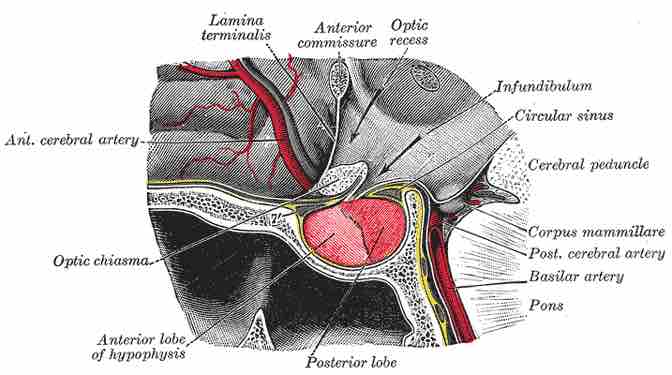The pituitary gland, or hypophysis, is an endocrine gland about the size of a pea. Although located at the base of the brain and often considered to be part of the brain, the pituitary gland is in fact a separate organ. It protrudes off the bottom of the hypothalamus at the base of the brain, and rests in a small, bony cavity.
The pituitary is functionally connected to the hypothalamus by a small tube called the infundibular stem, or, pituitary stalk. The pituitary gland secretes hormones that regulate homeostasis.

Pituitary location
The location of pituitary gland in the human brain.
The pituitary gland is divided into two parts, the anterior pituitary and the posterior pituitary.
- The anterior pituitary receives signaling molecules from the hypothalamus, and in response, synthesizes and secretes seven important hormones including thyroid-stimulating hormone and growth hormone.
- The posterior pituitary does not produce any hormones of its own, rather, it stores and secretes two hormones made in the hypothalamus—oxytocin and anti-diuretic hormone.

The pituitary gland
In this image, the pituitary gland is referred to by its other name, the hypophysis.